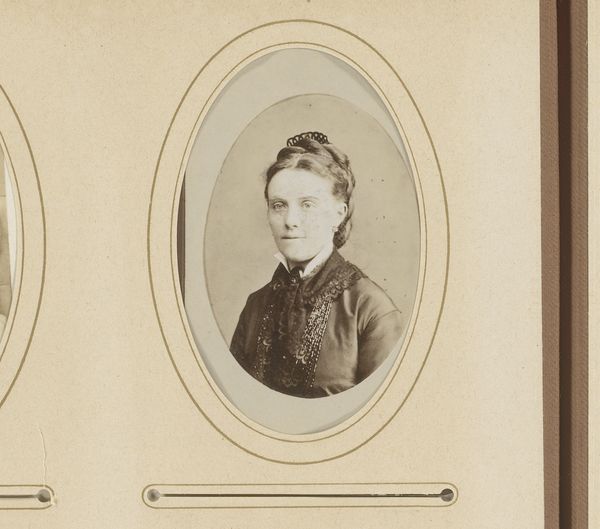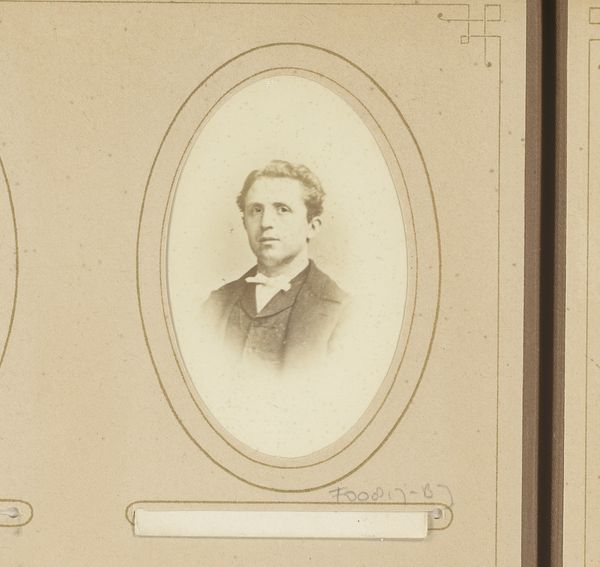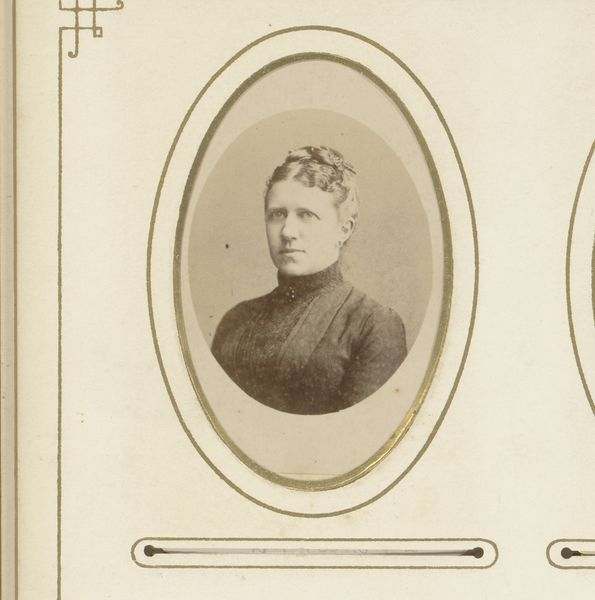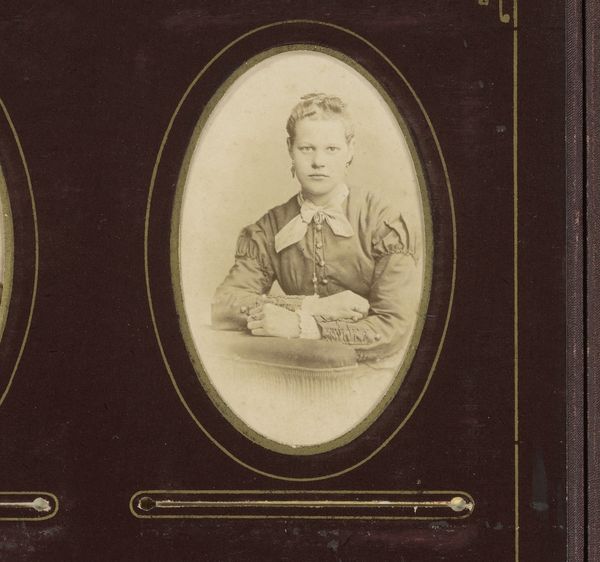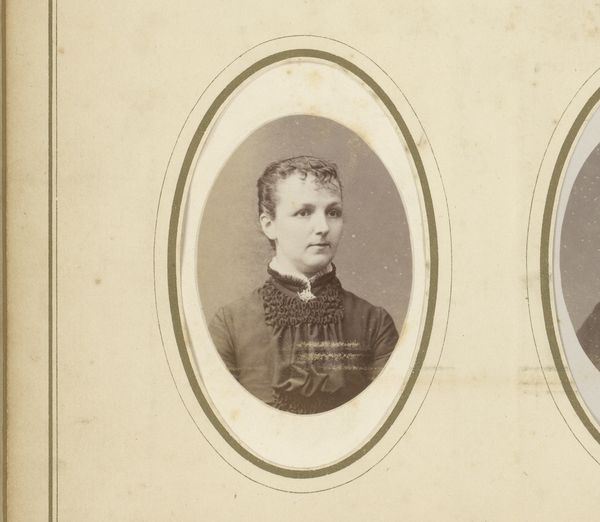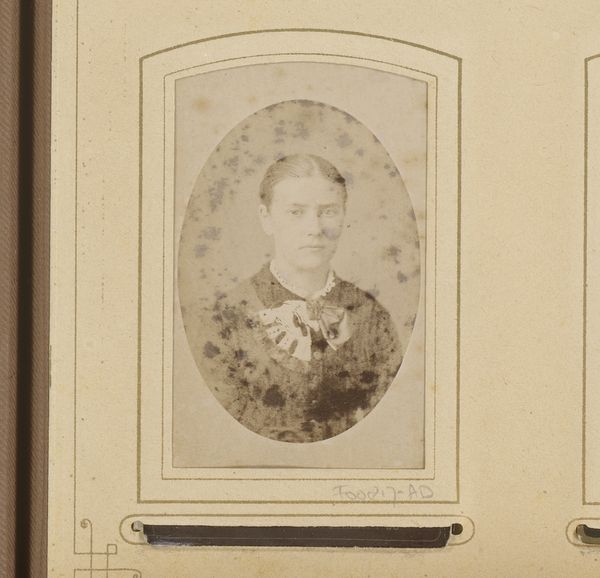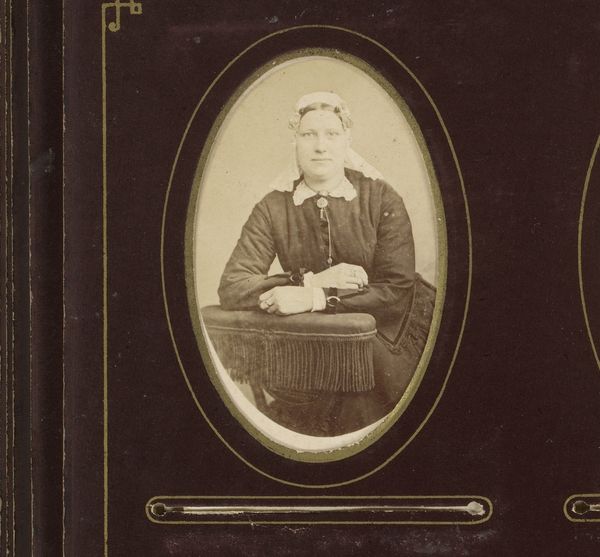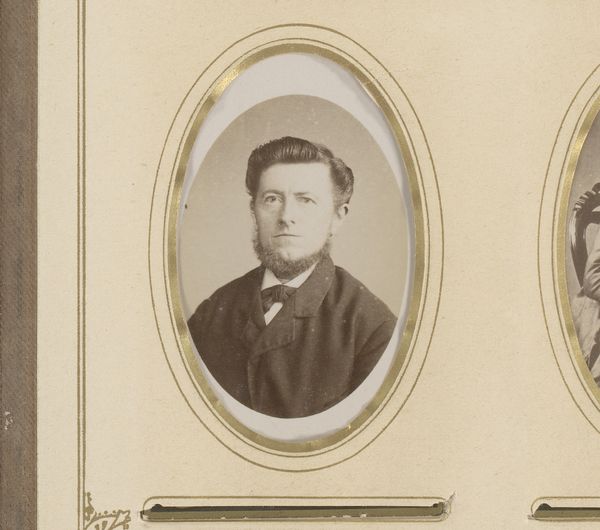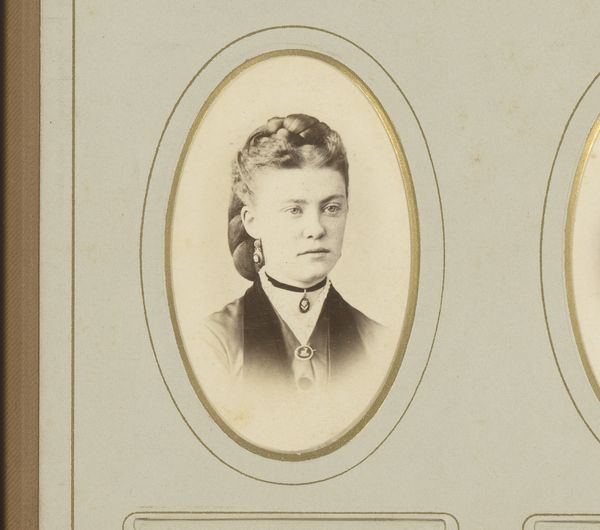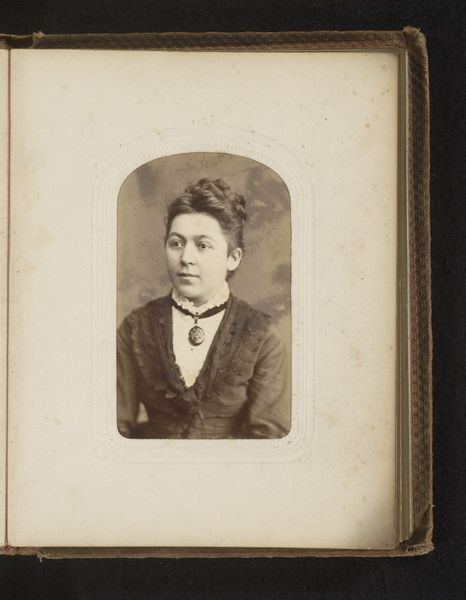
Dimensions: height 82 mm, width 50 mm
Copyright: Rijks Museum: Open Domain
Curator: Looking at this image, I feel a palpable sense of the past, a quietude. Editor: Yes, it certainly evokes a specific time. We are looking at a photographic portrait by Johann Georg Hameter, titled "Portret van een vrouw" and created sometime between 1869 and 1885. Curator: The austerity of the frame combined with the somewhat faded sepia tones definitely anchors it in the late 19th century. I wonder about the sitter—her identity, her story, her agency in choosing how she’s represented here. Editor: Precisely. Considering the social context of that era is crucial. Photography was becoming more accessible, yet a formal portrait still carried weight, particularly for women navigating societal expectations. It was often a way to assert status. The clothes, for instance. They can teach us a great deal. Curator: The tight collar, the braided hair – everything seems meticulously composed, almost restricting. It brings to mind contemporary discussions around performativity and the female gaze. Was she fulfilling an expected role, or was this a carefully constructed self-portrait for posterity? The pictorial style of the photo can reveal information on this topic. Editor: An important point. The portrait studios of the 19th century certainly had their own power structures and visual languages, consciously influencing representation, so in many respects, women didn’t yet have control. What role did these studios and the emerging commercial industry play in the development and diffusion of this image and images like it? Curator: I agree. While Hameter may have been the one behind the lens, the resulting image speaks to a collaborative process—one where gender, class, and evolving photographic practices all intersect. Considering Hameter’s potential choices and what limitations may have impacted that photograph could unlock further nuance, don't you agree? Editor: Absolutely. By examining the institutions and cultural norms surrounding photography, we gain a richer understanding of the sitter and her time, including the many people who would be actively producing these portraits and the forces actively distributing them as well. Curator: Looking at it now, I appreciate that while a seemingly simple image, this portrait actually presents a fascinating entry point for interrogating gender, identity, and the complex history of photography. Editor: A silent witness, this portrait allows us to pose vital questions about art, agency, and social realities.
Comments
No comments
Be the first to comment and join the conversation on the ultimate creative platform.

